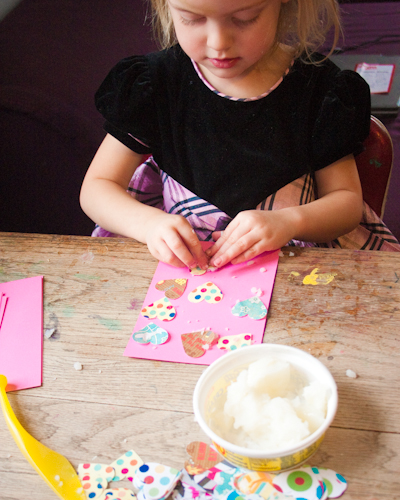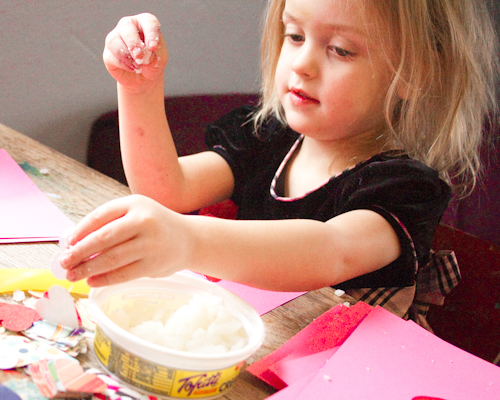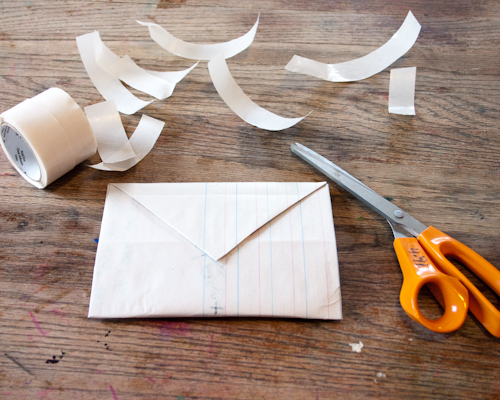No matter what project you’re working on, we can show you how to make glue to suit your needs. Try one of these five recipes!
I’m a glue stick addict. It’s terrible, I know. I can’t imagine a single art supply that uses up more worthless plastic packaging and takes up more landfill space, unless perhaps it’s markers, which are also pretty terrible, but at least markers last longer. My two daughters can use up an entire glue stick during the course of one exuberant art project. This year, one of my goals has been to regularly use homemade, natural glues in place of store-bought ones. Homemade glue has a lot going for it. You know exactly what’s in it, it’s WAY cheaper, it doesn’t require a ton of plastic packaging, it’s completely effective, and if you run out in the middle of a project, you can just whip up another batch instead of running to the store. Here’s how to make glue using all natural ingredients, and I have five options for all different applications! I’m thrilled to say that since my experiment has begun, my family hasn’t thrown a single empty glue stick into the trash, and we’ve found some great glue recipes that we all love to use. Below are five of our favorites.
How to Make Natural Glue
1. Homemade Glue
In her round-up of homemade kids’ craft supplies, Maria Dryden links to a homemade glue recipe from Eco Child’s Play that calls for flour, sugar, water, and vinegar. I imagine that you need to use refined white sugar here, not the funky turbinado sugar that I usually bake with, but it was a good recipe to use up the last bit of white sugar that I had to buy to bake birthday cupcakes.
2. Cornstarch Glue
We have a lot of cornstarch on hand that we use for a multitude of craft and science projects, so I probably use this simple cornstarch glue the most often. The consistency of cornstarch glue is more like paste than white glue, which makes it best for children’s daily little craft projects and activities.
3. Envelope Glue
I do make my own envelopes, so I find this lickable envelope glue from Scrapbook.com to be a helpful substitute for the double-sided tape that I used to use. The glue calls for gelatin, so it’s not vegan, but it also calls for the flavoring extract of your choice, so that you can, if you so desire, make chocolate-peppermint envelope glue.
4. Glue Dots
As a scrapbooker, I’ve been the most thrilled by this tutorial for homemade glue dots, courtesy of The Frugal Crafter. The tutorial actually calls for store-bought glue, but if you’ve ever shelled out for glue dots, suspecting the whole time that surely you could make these yourself if only you knew how, then you, too, will be thrilled to learn the secret. My biggest revelation when making homemade glue dots is the realization that they don’t have to be dots anymore–when you make your own, you can make them to be any shape that you need them to be, perhaps following the outline of a specific embellishment that you want to add, or sized to a particular cut-out.
5. Flour-less Glue
Homemade glue recipes are only fun if you actually have the ingredients to make them at home, so here’s another basic glue recipe with some different ingredients: this flour-less glue recipe, courtesy of the Kitchen Pantry Scientist, uses only milk and vinegar. This flour-less glue isn’t vegan, either, since it requires the casein from animal milk to make it work, but if you don’t have flour, but you did have cereal with cow’s milk for breakfast, then you’re in luck.


